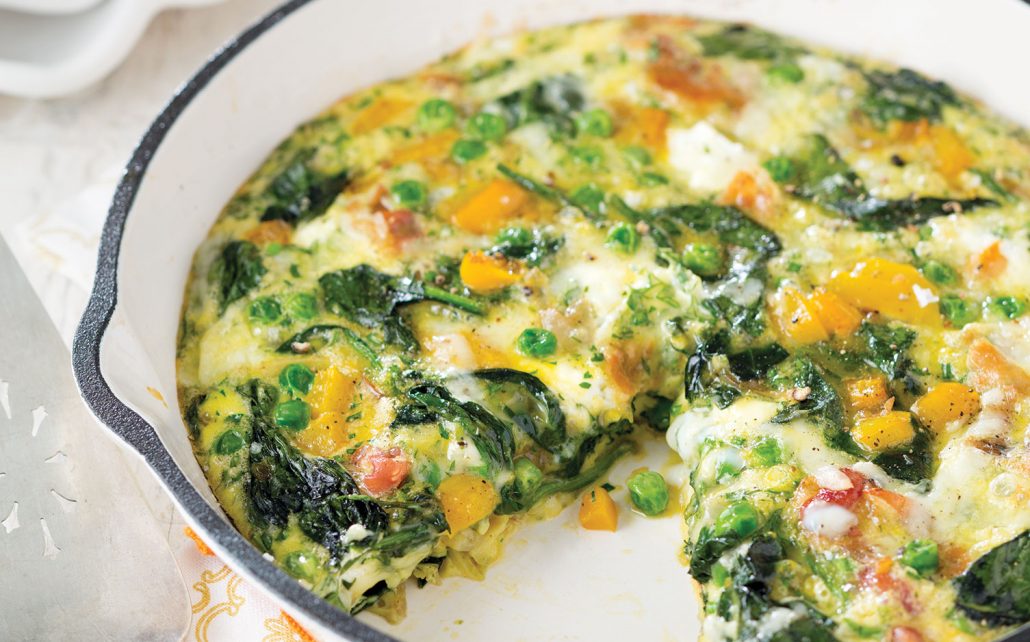Anyone who follows me on my many social media outlets already knows how much I love eggs. They’re a staple food, not only in my life, but worldwide.
Eggs are often consumed for their high protein content as well as their versatility in meals and recipes.
And while many people consume their prepared egg dishes in one sitting, you may wonder whether cooked eggs can be saved and reheated for another meal.
In this article we’ll take a look at some factors to consider when reheating eggs, as well as how to reheat various forms of cooked eggs safely.
Effects of Reheating
Reheating leftovers of any kind may affect the texture, flavor, and nutritional content of the food.
For instance, heating vegetables has been shown to reduce vitamin content when compared with raw, uncooked vegetables. (1)
When it comes to eggs, some studies have found some nutrient and compositional differences between raw and cooked eggs. However, research on whether reheating previously cooked eggs has any effect on their nutrition content is lacking. (2, 3, 4)
Rather, the more significant effects are likely changes in texture and potentially flavor. Reheated egg dishes may become dry or rubbery.
Regarding safety, as long as egg dishes are stored properly and then reheated to a recommended temperature, it’s generally considered safe to eat leftover eggs.
How to Reheat Eggs
Generally, reheated eggs and egg dishes are safe to eat as long as they have been initially cooked to 160°F and properly stored. (5)
However, raw eggs should initially be cooked until they are firm and no longer runny. This helps reduce the risk of ingesting bacteria, such as Salmonella, which can cause a serious foodborne illness that’s characterized by symptoms like diarrhea, fever, cramps, and vomiting. (6)
Once eggs have been thoroughly cooked, they should be placed in a shallow container to allow for quick and even cooling and then stored in the refrigerator at 40°F or below. Leftover eggs should be eaten with 3 to 4 days.
To kill any germs and reduce the risk of illness, a general rule of thumb is that leftover eggs and egg dishes should be thoroughly reheated to 165°F before eating.
Here are some tips for reheating some common types of egg dishes to the appropriate temperature:
- Scrambled eggs: The quickest method to reheat scrambled eggs is in a microwave-safe dish. Cook on high for 20 to 30 second intervals, stirring in between to heat evenly.
- Omelets and quiches: Reheat multi-ingredient egg dishes in the oven for the best results. Using an oven-safe pan, heat at 350°F for 15 to 20 minutes, or 25 to 30 minutes if frozen.
- Boiled eggs: These should not be microwave due to risk of the yolk exploding. Instead, boil water and pour it over the boiled egg in a heat-resistant dish until submerged. Let them sit for 10 minutes to reheat through.
- Fried eggs: Place fried eggs on a skillet with a small amount of butter or oil. You don’t need to flip them as long as you allow them to heat through on one side for 2 to 5 minutes.
- Poached eggs: Bring a saucepan of water to a simmer and place the poached eggs in it for 1 to 2 minutes to reheat them through before carefully removing.
- Sunny-side up eggs: These should be placed on a greased plate that has been preheated for 30 seconds. Microwave the egg for another 30 seconds and then allow it to rest for 1 minute to prevent the yolk from exploding.
Bottom line
Cooked eggs and egg dishes can be safely consumed as leftovers if they’re initially cooked thoroughly, stored properly, and reheated to an adequate temperature to kill germs and prevent foodborne illness.
Different reheating methods work best for certain types of cooked eggs and egg dishes. These include microwaving, boiling, frying, or baking to reheat the internal temperature to at least 165°F before eating.
While there’s no evidence to suggest that reheating cooked egg dishes affects their nutritional content, leftover eggs may undergo slight changes in texture or flavor.


